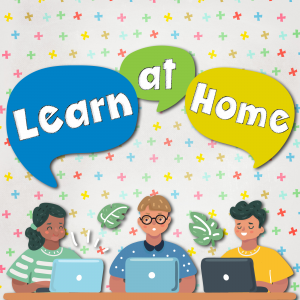
This post is part of a blog series: 9 Strategies for Successful Reading
If you haven’t read the other posts in the series, please read #1: Prepare, #2: Making Connections and Background Knowledge, #3: Asking Questions, #4: Prediction, #5: Drawing Inferences, and #6: Determining Importance.
When you first started reading to your child, did you read picture books? Most parents do. Picture books help beginning readers make sense of written language by connecting the words to the illustrations. As your reader grows older, they usually become more proficient at understanding language and do not need to rely on a book’s illustrations for meaning. They can learn to create their own pictures in their minds. These mental images will help with reading comprehension.
Strategy #7: Creating Mental Images
Creating mental images, or mind pictures, is when a reader creates a movie in their mind. Many struggling readers do not know they are allowed to do that! Their reluctance could be that creating a mental image is easy for them and they believe reading has to be hard. It could be that creating a mental image may involve pausing a moment during reading to ponder and visualize, and they believe reading needs to be done quickly.
Whatever the reason, let your child know it is okay to stop for a moment to make an image in their mind about how a character or setting looks or how the actions play out. It’s okay to stop reading and play a mind movie about what it was like, for example, when the main character and his best friend had an argument in front of the whole school.
Like our other strategies, creating mental images is about actively engaging the reader in the text. When your young reader can make a connection between the words they read and the images they create in their head, they create meaning. Creating meaning is always what we aim for in reading!
You can use the strategies we’ve already learned to help your child learn how to create mental images:
Use background knowledge and make connections
Many of the books kids like to read are about other kids who experience many of the same issues. For example, many kids’ books take place in school. Your child can use what they already know about school to create pictures in their minds.
If the author of a book describes a character, your child can think about any kids they might know who look like that. Or even an actor who resembles that description! Your child can also make connections about how a character feels by how they are described. If a character is described with his “eyes blurring with tears,” your child can imagine what that might be like.
If you are reading with your child, talk about your mental images with each other to see if they are the same. This could lead to a fun conversation about what you both “see” in the text!
Ask questions
Have your kids ask questions about what the author describes. If you were watching a movie or TV show of this book, what would the main character look like? How did the author describe his hair? His eyes? Does her school look like yours? If he is upset over the argument with his friend, how does he express that sadness? Does he hang his head? Is he crying? If the character’s eyes are blurring with tears, has that ever happened to you? If so, what does it look like?
And two new strategies:
Use all the senses
Creating mental images is not just about visuals. Have your child think about what other senses they can bring into their experience. If a scene takes place in the school cafeteria, what does it smell like? Is it noisy? If a character falls and hits her knee, what does the pain feel like? Bringing in these other senses can enhance the images and make them seem real.
Draw a picture
For kids who like to draw, they can even draw pictures of what they “see” when they read the text. This is like bringing the mental picture to life!
Creating mental images is a powerful tool for struggling readers. The mind movies make the stories come to life!
 About this blog series
About this blog series
We’ll go over 9 strategies in this series of blog posts. Your child might not need all nine. One might work magic! If you are a good reader and haven’t ever thought about how you read, you might be surprised to discover you use some or all of these strategies.
And again, a reminder that good readers are not smarter than readers who struggle. Not at all! Many highly intelligent and successful people have struggled with reading, and they became good readers. What they do, and what all good readers do, is develop habits and strategies that help them comprehend what they are reading and give them skills for when they get stuck.
Visit Learn at Home for even more great resources, including:
- Free online tutoring
- Online tools available 24x7x365
- Recommended items from our collection that you can pick up curbside

